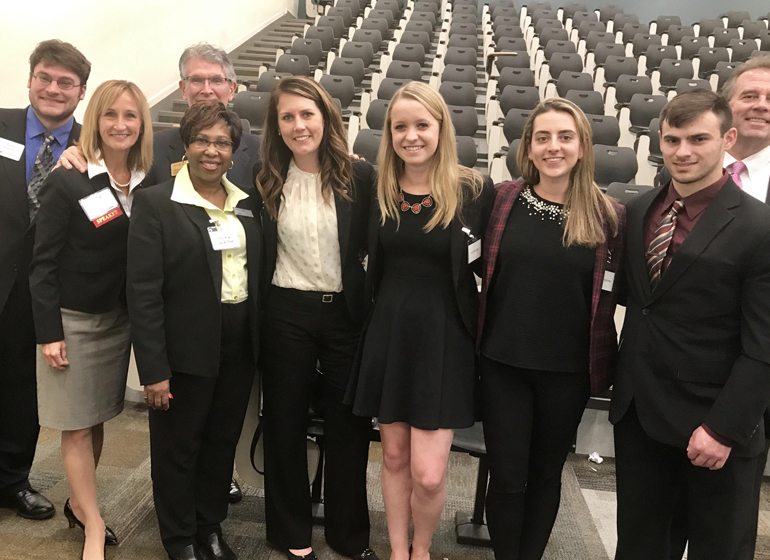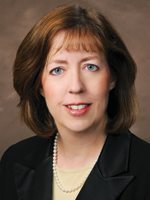As classes begin at Marquette University this fall, a group of 19 students will have the unique experience of making actual credit and lending decisions for the Wisconsin Women’s Business Initiative Corp.
The students are the first cohort in Marquette’s new undergraduate commercial banking program, an effort being led by Kent Belasco, a former executive at First Midwest Bank and director of Marquette’s banking program. The idea is to provide students with banking-focused training and the ability to move into increasingly complex jobs right out of school.

“That hits home with all the bankers,” Belasco said, adding many banks have seen their resources available for training reduced as the importance of training increases, because many people don’t come to commercial banking directly. “It can’t be just by chance anymore. They need to have focused people.”
The work with WWBIC is part of the second of three banking-specific classes that are included in the program. The first class provides students with a baseline understanding of the industry, including how banks make money, how to evaluate banks and their financial statements, dealing with risk, liquidity, loans and loan securitization.
“When somebody finishes this course, they’re going to understand the terminology of banking,” Belasco said.
Students take the class before they are even admitted into the banking program. Before enrolling in the second class, they must go through a series of interviews with Belasco and professionals from the program’s advisory board to be admitted into the program.

If students complete the first two courses, a third course delving deep into regulations and bank risk management awaits in their senior year. Along the way, students are also expected to complete two internships at banks and other finance courses, before eventually graduating with a bachelor’s in finance with a concentration in commercial banking
The program is being responsive to economic and industry events over the past 10 to 15 years, Belasco said.
“We’ve had our challenges with the economy; we’ve had our challenges with unethical behavior,” he said, before adding that banks also play an important role in helping foster economic growth. “We need talent to go back into the community and build the small businesses.”
Commercial banking accounts for roughly 23 percent of finance and insurance sector employment in Wisconsin. Commercial banking employment is down about 1.6 percent statewide and 1 percent nationally since 2012, but it is up 2.6 percent in metro Milwaukee, according to data from the U.S. Bureau of Labor Statistics.
Wages, however, have been growing over the past several years at the local, state and national levels. The average weekly wage in the industry is up roughly 30 percent since 2010 and around 15 percent since 2012, although the year-over-year increase was down in 2016.
Belasco and Rose Oswald Poels, Wisconsin Bankers Association president and chief executive officer, said the pace of technological change means that many of the jobs in commercial and community banks have been rapidly evolving.
“The potential careers that exist today in banking are different from what you would have found even 20 years ago,” Oswald Poels said.
The role of a teller has shifted to more of a universal banker, new technology has led to expanded opportunities in IT and increased regulations have created more compliance positions for those not as interested in working directly with the public, she said.

“During the Great Recession, I think many students were turned off by banks,” Oswald Poels said. “It’s pretty exciting all the opportunities that are there.”
Evolving technology and new workforce needs, however, change what banks need from their employees.
“What it causes is a need for bankers more well-versed in a variety of disciplines within the banking space,” Belasco said.
There are very few commercial banking programs at the undergraduate level around the country. Part of Belasco’s goal is to professionalize the training of young bankers and to help increase awareness of the distinction between investment and community banks.
He’s also seeking to connect Marquette’s commercial banking program to the business world. The program has an advisory board that includes the Wisconsin, Illinois and American bankers associations, along with a number of banks, including BMO Harris Bank, Wells Fargo, U.S. Bank, Wintrust and First Midwest Bank.
“The interest is incredibly strong from the industry,” Belasco said.
So far, five companies have also signed on to support the program as part of its Founder’s Circle. Belasco said the goal is to raise $4 million for an endowment to support the program going forward.
Once the curriculum hits full stride, Belasco believes it can produce 40 to 60 students prepared for the banking industry per year, with cohorts of around 25 each semester. Oswald Poels said those students would be a welcome infusion for her organization’s members.
“It’s really been a challenge to get more talent interested in the industry,” she said, adding many high school students don’t think of banking as a potential career option and those that do often think of working in investment banking and moving to Chicago or New York.
Beyond the training they receive on how to do the work, Belasco hopes making real-world decisions like the ones students will make for WWBIC will help teach a larger lesson about the industry.
“Banking can be a very emotional place,” he said. “It’s not just numbers; it’s people’s lives and it’s people’s businesses.”

